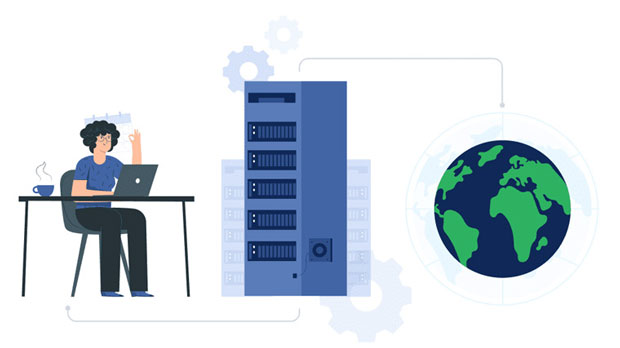When purchasing a socks5 proxy, one of the primary concerns for users is whether their provider will track or log their data. socks5 proxies are widely used for online privacy, bypassing restrictions, and improving anonymity. However, if the provider keeps logs of your activities, your privacy could be compromised. It's essential to know how to assess a provider’s logging policy before you commit to a service. In this article, we will explore several key factors to ensure that the SOCKS5 provider you choose is trustworthy and respects your privacy by not storing your sensitive data. Understanding SOCKS5 Proxies and Privacy RisksSOCKS5 is a protocol used for routing network traffic between a client and a server. It is commonly used for bypassing geo-restrictions, improving privacy, and masking a user’s IP address. Unlike traditional HTTP proxies, SOCKS5 proxies are more versatile, as they can handle a wide range of traffic types, including FTP and peer-to-peer connections.The key appeal of SOCKS5 proxies is their ability to maintain a higher level of anonymity compared to regular HTTP proxies. However, even with the benefits of improved privacy, there is a significant caveat: if a provider logs your data, all the advantages of anonymity are nullified. Logs can expose sensitive details such as your real IP address, the websites you visit, and the duration of your browsing sessions.To ensure your data is not being logged, it’s crucial to evaluate a provider’s commitment to privacy and security.Factors to Consider Before Purchasing a SOCKS5 ProxyWhen deciding on a SOCKS5 proxy provider, the most important factor is their logging policy. However, there are other considerations that you should also take into account. Below are the key factors to review:1. Read the Privacy Policy ThoroughlyBefore purchasing a SOCKS5 proxy, always examine the privacy policy of the provider. This document should clearly outline what kind of data is collected, how it is stored, and whether it is shared with third parties. A trustworthy provider will explicitly state that they do not log any user activity or identifiable information. Most privacy-conscious SOCKS5 providers follow a no-logs policy, but it’s essential to verify this. Look for statements such as "We do not collect logs of user activity" or "No personally identifiable information is retained." Pay attention to any ambiguous language that could leave room for hidden data retention.2. Check for Independent AuditsMany proxy providers claim to have a no-logs policy, but how can you verify this? One effective way is to check whether the provider has undergone independent third-party audits. These audits assess the provider’s infrastructure, privacy practices, and claims regarding data retention. An audit by a credible, independent firm serves as a transparent validation of the provider’s claims. If a SOCKS5 proxy provider has been audited and the results are publicly available, it is a strong indicator that they are committed to keeping their promises regarding privacy.3. Investigate Jurisdiction and Data Retention LawsThe jurisdiction under which a provider operates is crucial when evaluating their logging policies. Some countries have stringent data retention laws that compel companies to store user data for certain periods. A provider based in such a country may be legally required to log user activity, which can compromise your privacy.For example, providers located in countries with strict data retention laws (such as the United States or members of the European Union) may be required to store logs under certain conditions. If privacy is a major concern for you, it’s advisable to choose a provider based in a country with more relaxed data protection regulations, such as Panama or the British Virgin Islands. These jurisdictions typically have minimal obligations regarding data retention and surveillance.4. Look for Transparent and Clear Terms of ServiceAlongside the privacy policy, the provider’s terms of service are also an important document to review. These terms will outline how the provider operates, including how data is handled. A reputable SOCKS5 provider should be transparent about its operations and not leave anything to ambiguity.If the terms mention that the provider can collect or share data in certain situations, it could be a red flag. Look for terms that highlight the provider’s commitment to user privacy, such as not collecting or storing data unless required by law.5. Examine the Provider’s Reputation and ReviewsResearching user reviews and feedback is an excellent way to assess a provider’s credibility. Look for reviews that specifically mention the provider’s logging practices. If users frequently report that the provider has compromised their privacy or shared their data, that’s a clear indication that the provider may not be trustworthy.Reputation matters, and well-established providers with a proven track record of respecting user privacy are often more reliable. Avoid providers with a history of security breaches, data leaks, or questionable privacy practices.6. Consider the Technology and Security Measures in UseWhile the privacy policy and jurisdiction are key, evaluating the technical side of a SOCKS5 provider can provide additional insights into their commitment to user security and privacy. The security measures used by the provider—such as encryption protocols, DNS leak protection, and kill switches—are essential to safeguarding your data.A provider that employs advanced encryption and other security technologies is likely to have a stronger focus on protecting user privacy. In addition, look for features like IP address rotation and DNS leak protection, which can further reduce the chances of your data being exposed.7. Ask Directly: Contact the ProviderIf you are still unsure about a provider’s logging policy, it’s worth contacting them directly. Reputable companies will have customer support teams that can answer your privacy-related questions. Ask them explicitly about their logging practices and whether they track user activity in any way.A trustworthy provider should be more than willing to answer your questions and clarify any concerns. If they are evasive or unwilling to provide clear answers, this should raise a red flag.8. The Importance of a No-Logs PolicyThe no-logs policy is the cornerstone of any privacy-focused proxy service. Without it, your anonymity is compromised. A SOCKS5 proxy that logs data can be forced to hand over user information to authorities or other parties under certain conditions. This can lead to the exposure of your browsing habits, IP address, and other sensitive data, jeopardizing your privacy.Moreover, even if a provider does not directly hand over logs, keeping records internally creates the possibility of data breaches or misuse. Therefore, it is crucial to choose a provider that genuinely adheres to a strict no-logs policy and is transparent about their operations.Conclusion: Making an Informed DecisionEnsuring that your SOCKS5 proxy provider does not log your data requires careful research and due diligence. By thoroughly reviewing the privacy policy, seeking independent audits, understanding the jurisdiction, and examining user reviews, you can make an informed decision. Ultimately, privacy is about trust. By choosing a provider that is transparent, auditable, and committed to a no-logs policy, you can ensure that your online activities remain secure and private. When in doubt, don’t hesitate to ask the provider directly—your privacy is worth the extra effort to confirm.
Jan 10, 2025




















































